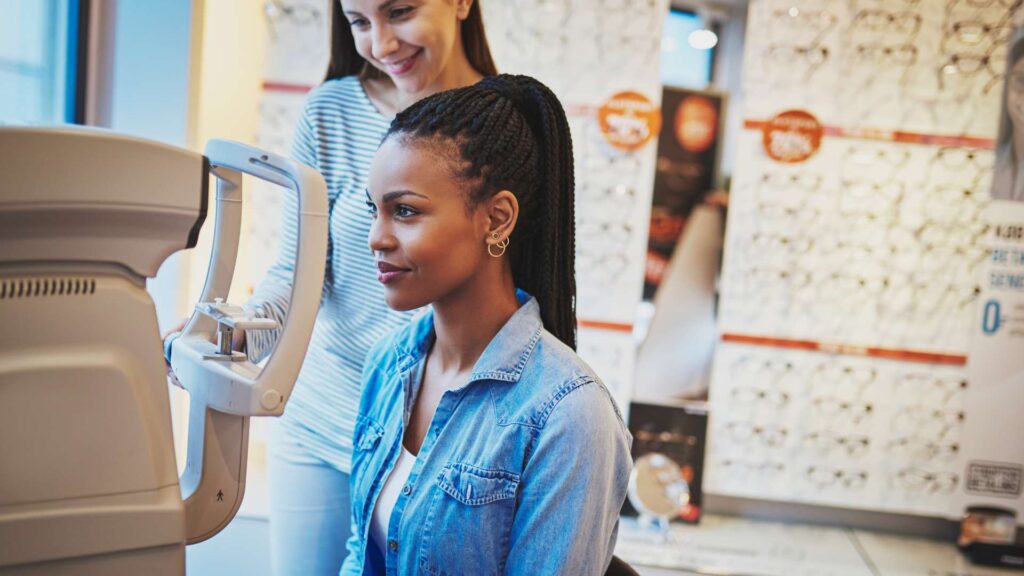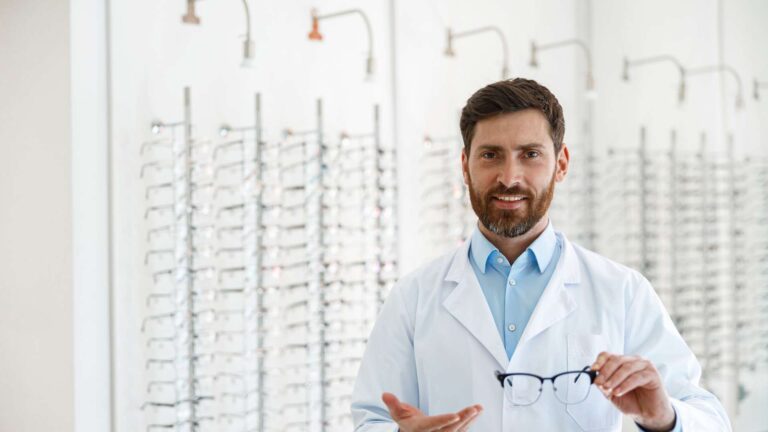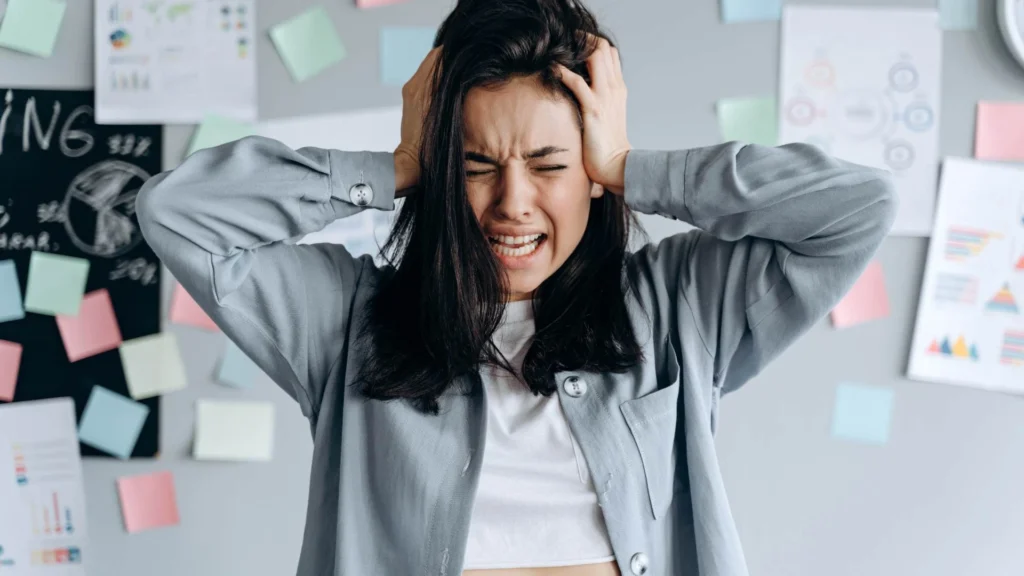Table of Contents
Without proper eyesight, people’s quality of life can suffer. Safety, productivity, and quality of life can be affected. Still, some miss their regular eye examinations either because eye specialists are unavailable in their neighborhood or because they are too expensive. Eye problems can go unnoticed until they become more difficult to treat if postponed.
However, smartphone-based vision screening apps and programs enable quick eye care at low costs. This blog examines affordable vision screenings in contrast to traditional testing; how these apps work, their accuracy, and how the Vision Discount Program by Beem Health brings affordable eye care into the market.
Traditional Vision Testing vs. Smartphone-Based Screening
Traditional vision testing usually involves visiting an optometrist or ophthalmologist. The process may include reading letters on an eye chart, checking for color blindness, measuring eye pressure, and even dilating the pupils for a closer look at the retina. These exams are thorough and are the gold standard for diagnosing eye disease.
However, traditional exams also come with barriers:
- Accessibility: In many areas, especially rural communities, eye doctors are few and far between.
- Cost: Without insurance, a comprehensive eye exam can cost between $100 and $250, not including glasses or contacts.
- Convenience: Scheduling appointments and taking time off work or school can be challenging.
On the other hand, smartphone-based screening apps offer:
- Affordability: Many apps are free or low-cost, with premium features costing far less than a complete exam.
- Accessibility: Anyone with a smartphone and an internet connection can test their vision from home.
- Convenience: Tests can be done anytime, late at night or on weekends.
- Early Detection: They allow people to notice potential problems sooner, prompting them to book an in-person exam if needed.
Of course, smartphone apps don’t replace professional eye care. Instead, they serve as a first line of defense—helping users monitor vision changes regularly and seek medical help when issues arise.
How Smartphone Vision Apps Work
A smartphone can check your vision. And it’s simpler than you think.
What to Expect
Most smartphone vision apps follow a straightforward process:
- Download the app and set up your profile (some ask about age or medical history).
- Test environment setup – The app usually suggests standing a certain distance from the phone, ensuring good lighting, and covering one eye at a time.
- Vision testing – Depending on the app, you may be asked to:
- Read letters or numbers that shrink in size (like a digital Snellen chart).
- Identify shapes, colors, or lines to check for astigmatism or color blindness.
- Track moving objects on the screen to test eye coordination.
- Results – Once finished, the app gives feedback such as “20/20 vision,” “slight nearsightedness,” or recommendations to see an eye doctor.
Pros
- Fast and easy—most tests take less than 10 minutes.
- No extra equipment needed, just your phone.
- Useful for routine self-checks.
Cons
- Cannot detect deeper health issues like glaucoma, cataracts, or retinal disease.
- Accuracy depends on user setup (distance, lighting, etc.).
- Results are best seen as screening, not diagnosis.
Accuracy and Reliability
The biggest question with smartphone vision tests is: Are they accurate?
Clinical studies show that many smartphone-based tests are reliable for screening common refractive errors, such as nearsightedness, farsightedness, and astigmatism. Some apps, especially those paired with accessories like clip-on lenses, can achieve high precision.
- FDA Approvals: Many mobile vision test tools have received FDA clearance, particularly those intended for telemedicine use. This adds credibility and reassurance for users.
- Best Use Cases: Smartphone screenings are best for:
- Quick self-checks between professional exams.
- Parents testing kids’ vision at home.
- Seniors monitor changes in eyesight over time.
- People in remote areas where optometrists are not readily available.
While apps can detect whether you’re struggling with focus or clarity, only a licensed professional can check for conditions like macular degeneration or diabetic retinopathy. Thus, they aren’t a replacement for regular eye exams.

Practical Tips for Parents
Vision screenings are essential for children. Poor eyesight can directly impact learning, reading ability, classroom performance, and self-confidence. Unfortunately, kids often don’t realize they have a problem—because blurry vision feels “normal” to them. If not detected early, conditions like nearsightedness or lazy eye can worsen over time and affect both academic progress and social development.
Here’s how parents can make smartphone screenings easier and more effective for kids at home:
- Turn it into a game: Many apps are designed with child-friendly visuals, such as colorful letters, shapes, or animated characters. Encourage your child by treating it like a fun challenge rather than a medical test.
- Use rewards: After completing the test, offer a small prize, extra playtime, or simple praise. Positive reinforcement helps children stay engaged and look forward to regular screenings.
- Be patient: Young children may get restless or distracted, so it’s best to break the test into shorter sections. This keeps the process stress-free and ensures more accurate results.
- Compare results: Keep a simple record of test outcomes and track changes over time. If you notice a consistent drop in performance, it may be time to schedule a professional exam.
- Don’t rely solely on the app: Apps are a helpful tool for early detection, but cannot replace a comprehensive eye exam. If a test shows concerns—or if your child frequently squints, rubs their eyes, or holds books too close—book an appointment with an optometrist.
By making vision checks a routine part of your child’s wellness—similar to brushing teeth or setting a bedtime—parents can help catch potential eye problems early.
Beem Health’s Vision Discount Program
Professional exams are essential for ensuring long-term eye health. That’s where Beem Health’s Vision Discount Program bridges the gap. Beem Health is focused on making healthcare more accessible and affordable, and vision care is no exception. Through their platform, users can:
- Access discounted in-person eye exams with trusted partner optometrists across multiple locations, making scheduling a visit that fits your lifestyle and budget easier.
- Order at-home vision testing kits, which provide more accurate measurements than standalone apps and give you professional-level insights without leaving home.
- You can find exclusive savings on glasses and contact lenses through affiliated providers, helping you reduce recurring eyewear costs.
- Use Everdraft™ for urgent expenses, so financial barriers never delay eye care, even when unexpected costs arise.
Families don’t have to choose between affordability and proper care. Parents can use apps for quick checks, then turn to Beem Health for discounted professional exams when needed. The program reduces costs and adds peace of mind—knowing that affordable, quality care is always within reach when your family needs it most.
Innovations and Trends
Vision care is undergoing a major transformation, driven by AI, mobile-first tools, and tele-optometry. Some exciting trends include:
- AI-Powered Diagnostics: Artificial intelligence analyzes retinal scans and detects early signs of glaucoma or diabetic retinopathy. In the near future, your smartphone may be able to alert you to conditions before symptoms appear.
- Wearables and Smart Glasses: Some startups are developing smart glasses that can auto-adjust to your vision, removing the need for multiple pairs of prescription lenses.
- Tele-Optometry: Just like telemedicine, eye care is moving online. Patients can use smartphone apps to conduct pre-screenings, then connect with licensed optometrists virtually for prescriptions and recommendations.
- Global Impact: In developing countries, where access to optometrists is scarce, mobile-based vision tests are helping communities detect problems earlier. This can make a huge difference in preventing avoidable blindness.
Conclusion
Vision health must never be neglected, yet millions of people postpone care. Mobile vision test programs can help everyone easily check their eyesight at home, but they cannot replace expert inspections. Beem Health’s Vision Discount Program allows families to benefit from digital tools along with expert care.
With digital platforms like Beem Health, affordable vision care is now within everyone’s grasp. For any financial aid, you can check out Beem, a smart wallet app trusted by over 5 million Americans with features from cash advances to help with budgeting and tax calculations. In addition, Beem’s Everdraft™ lets you withdraw up to $1,000 instantly and with no checks. Download the app here.














































